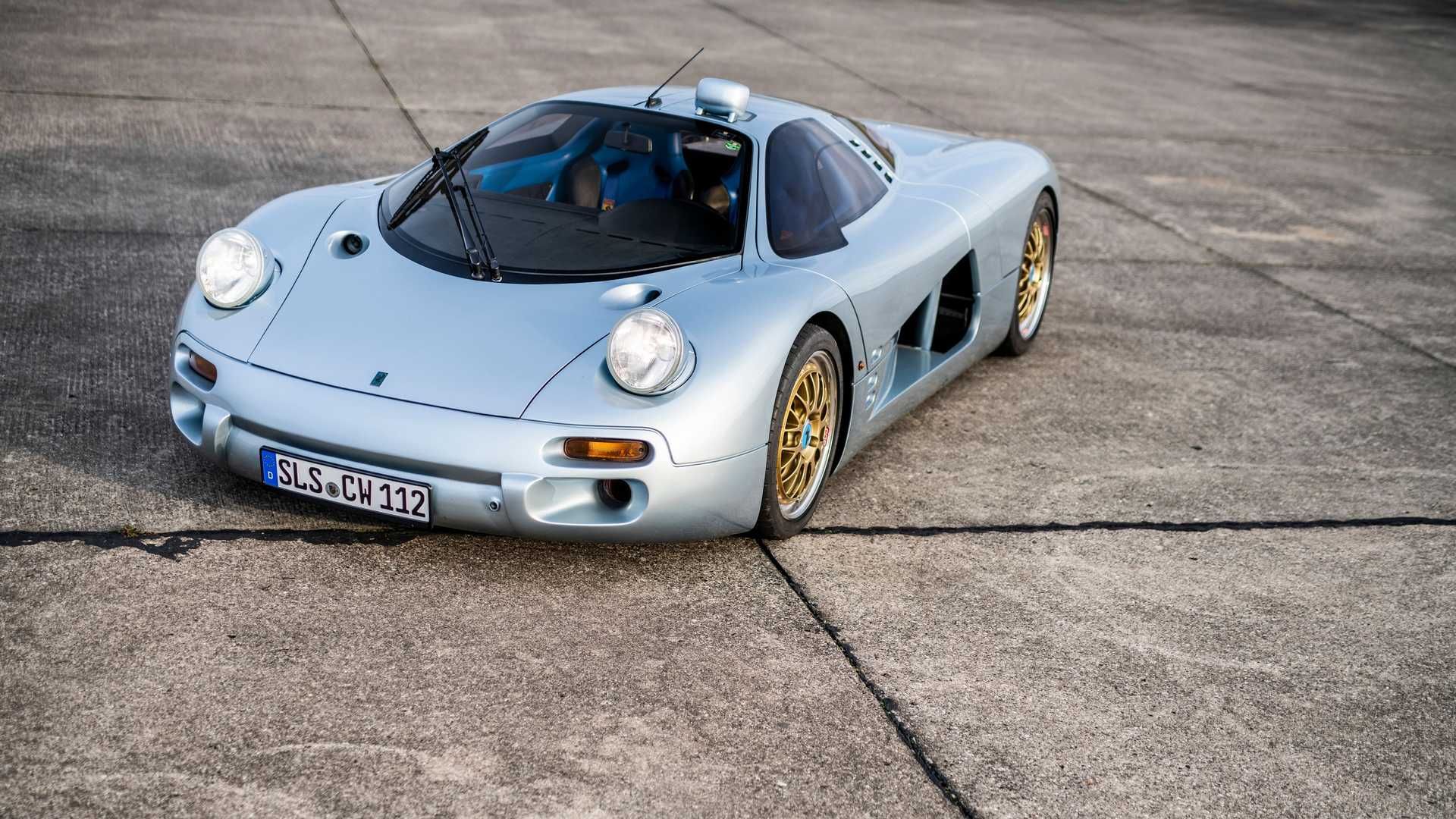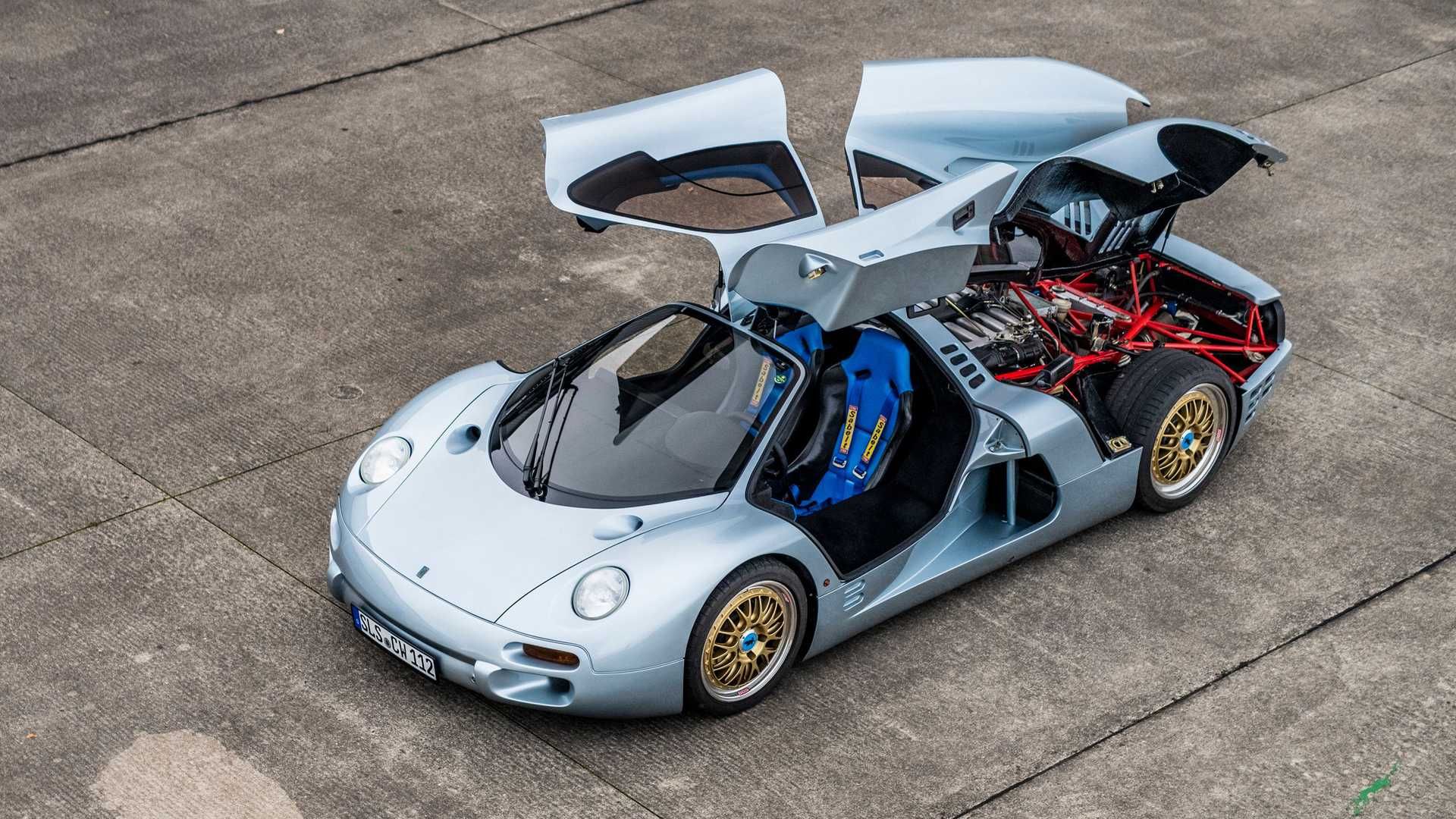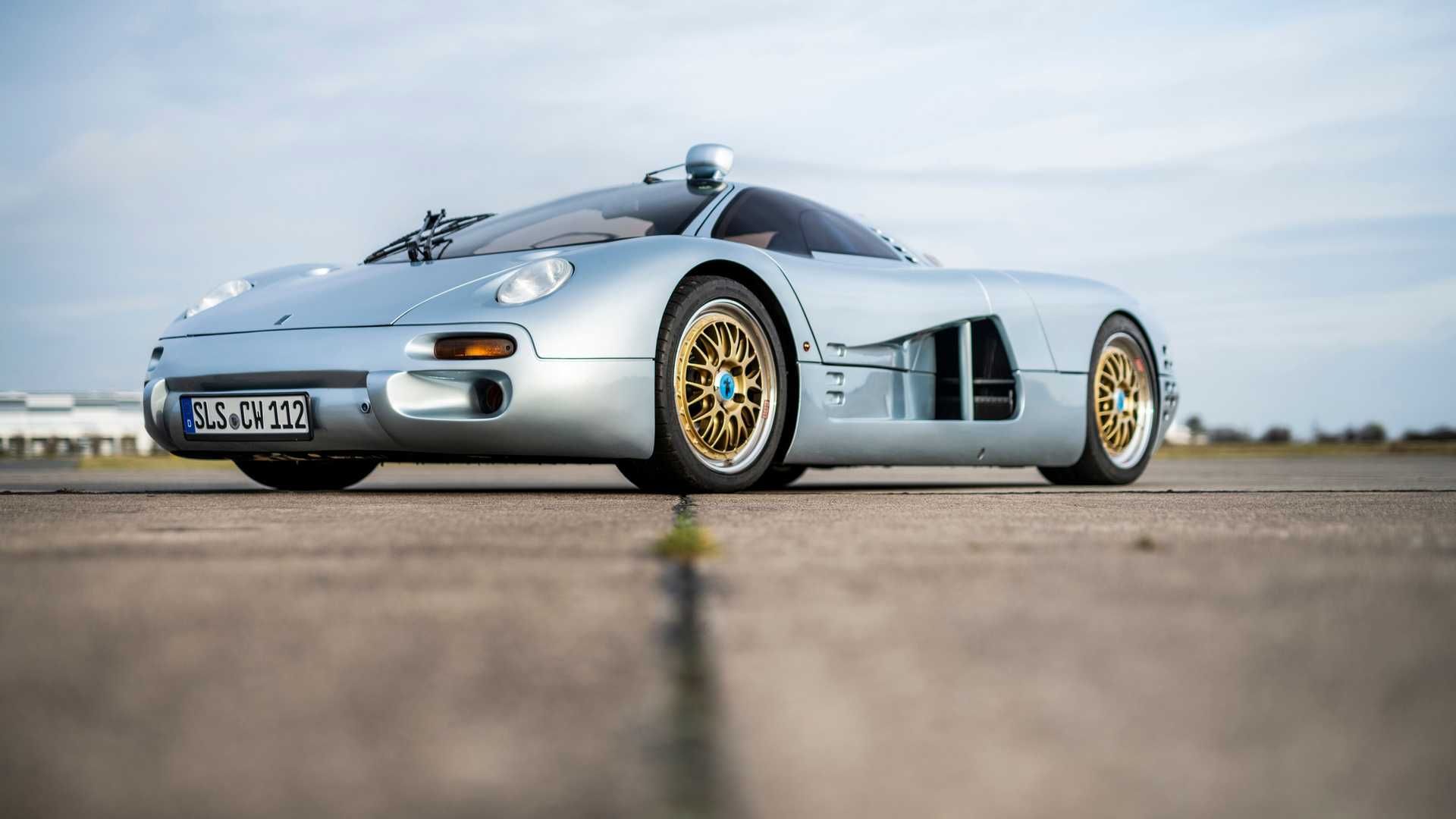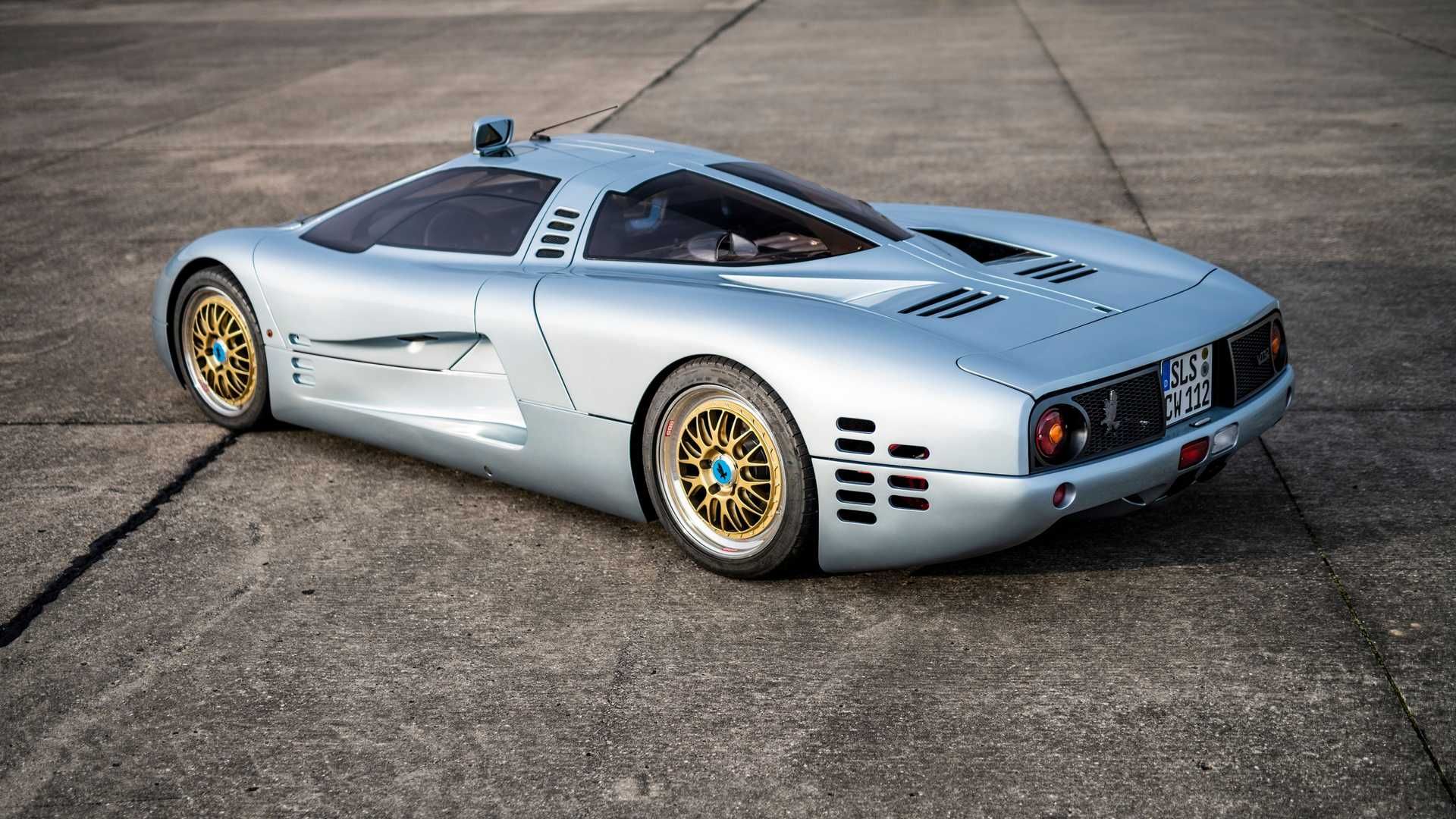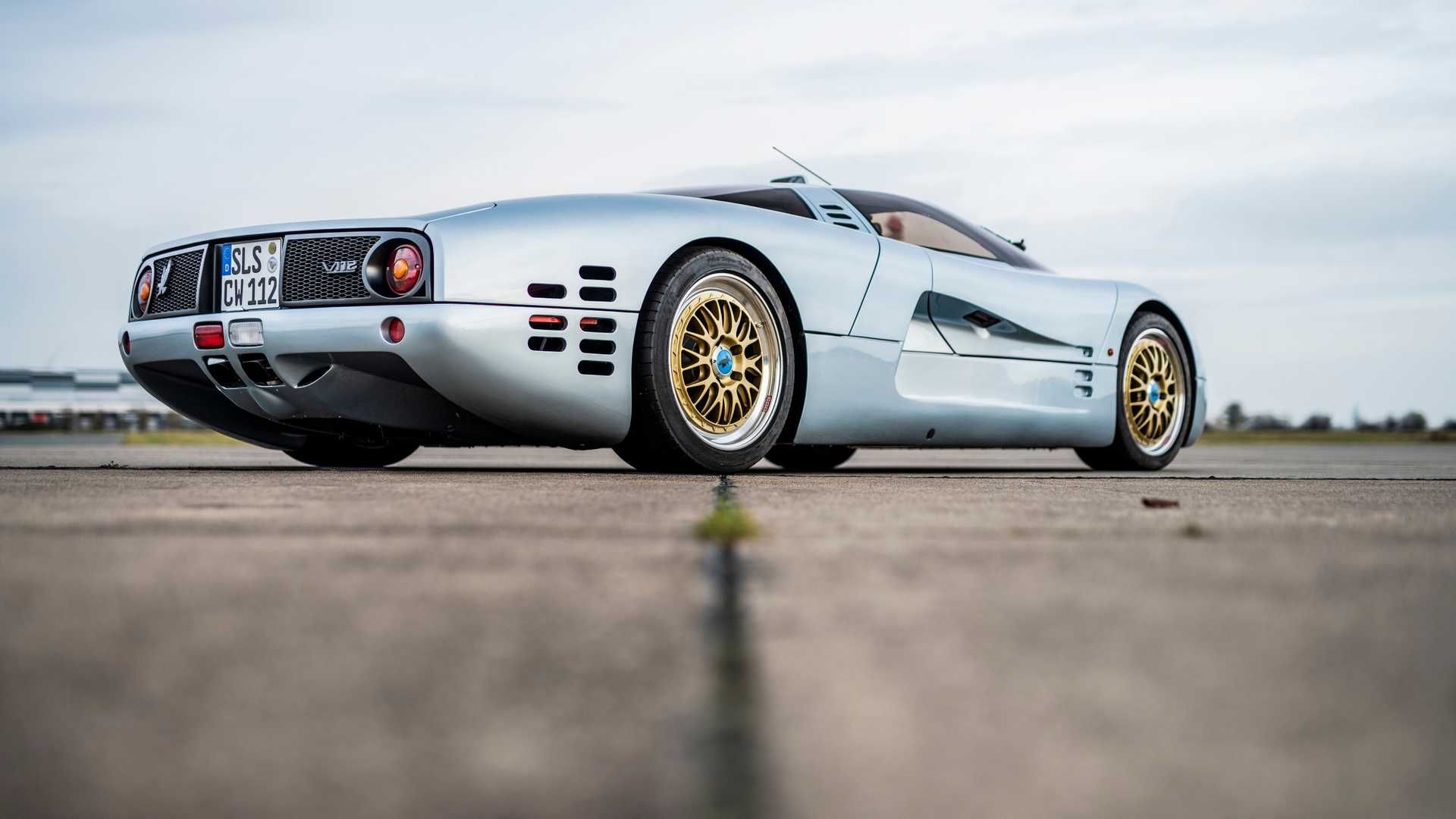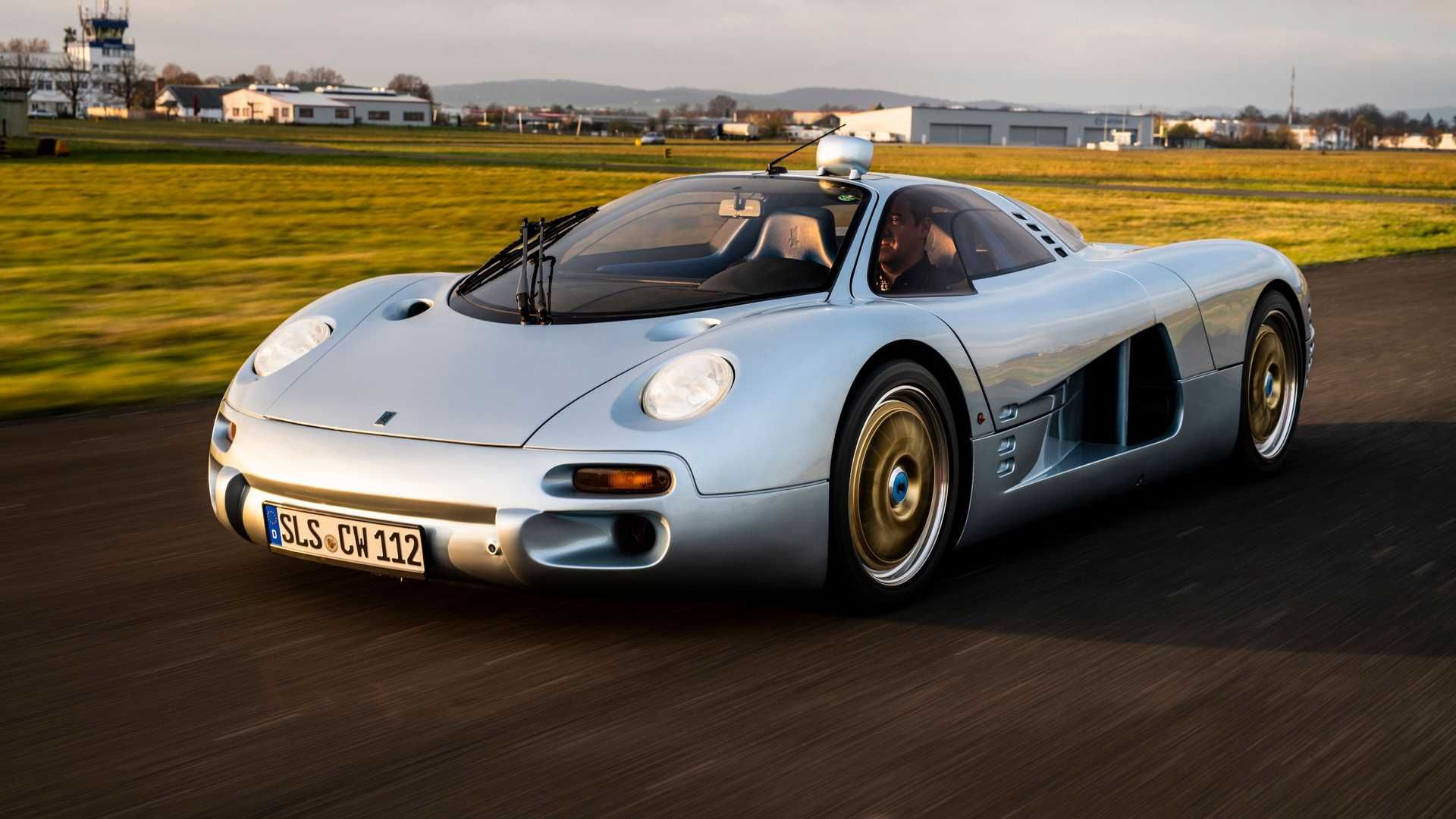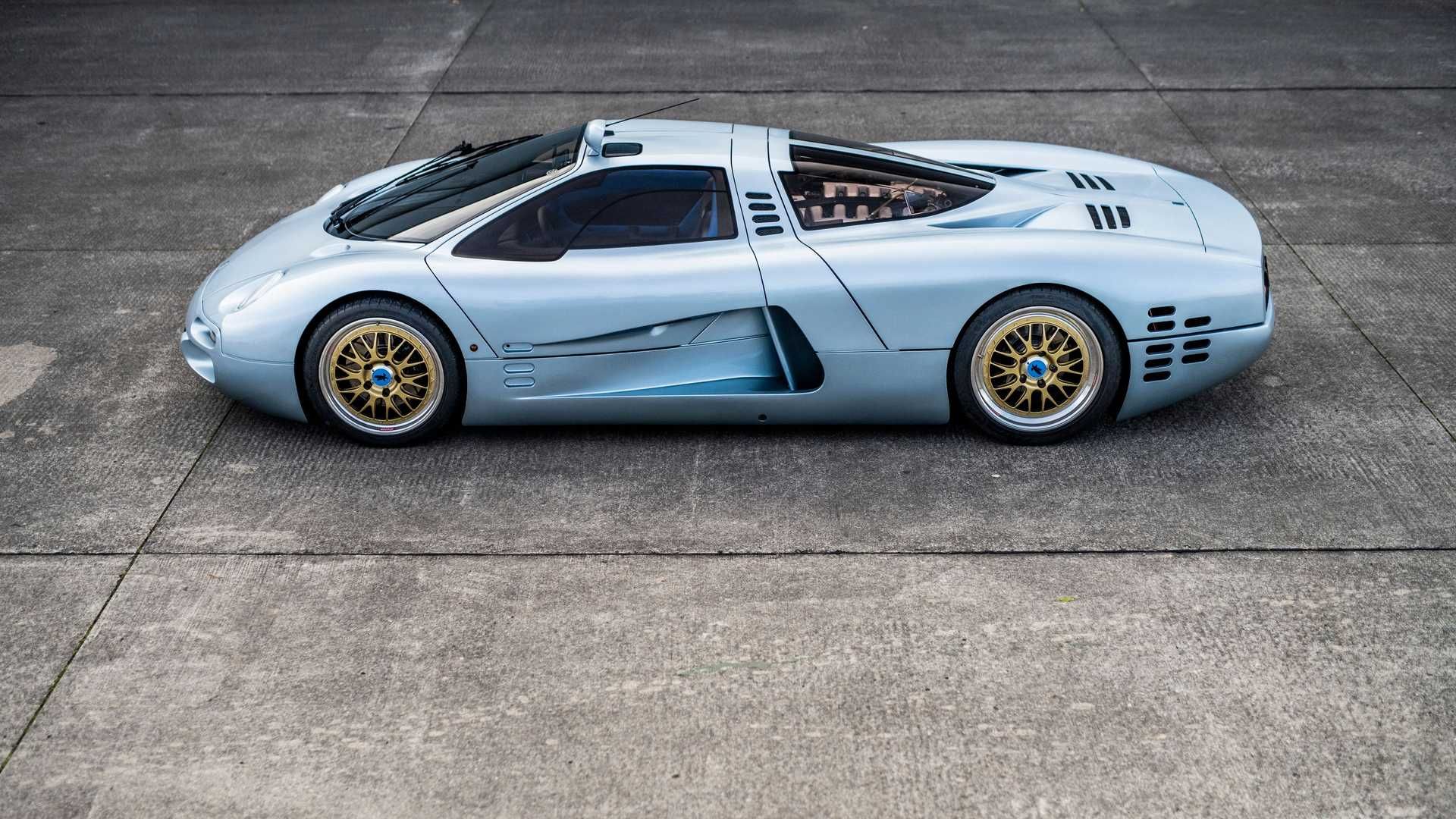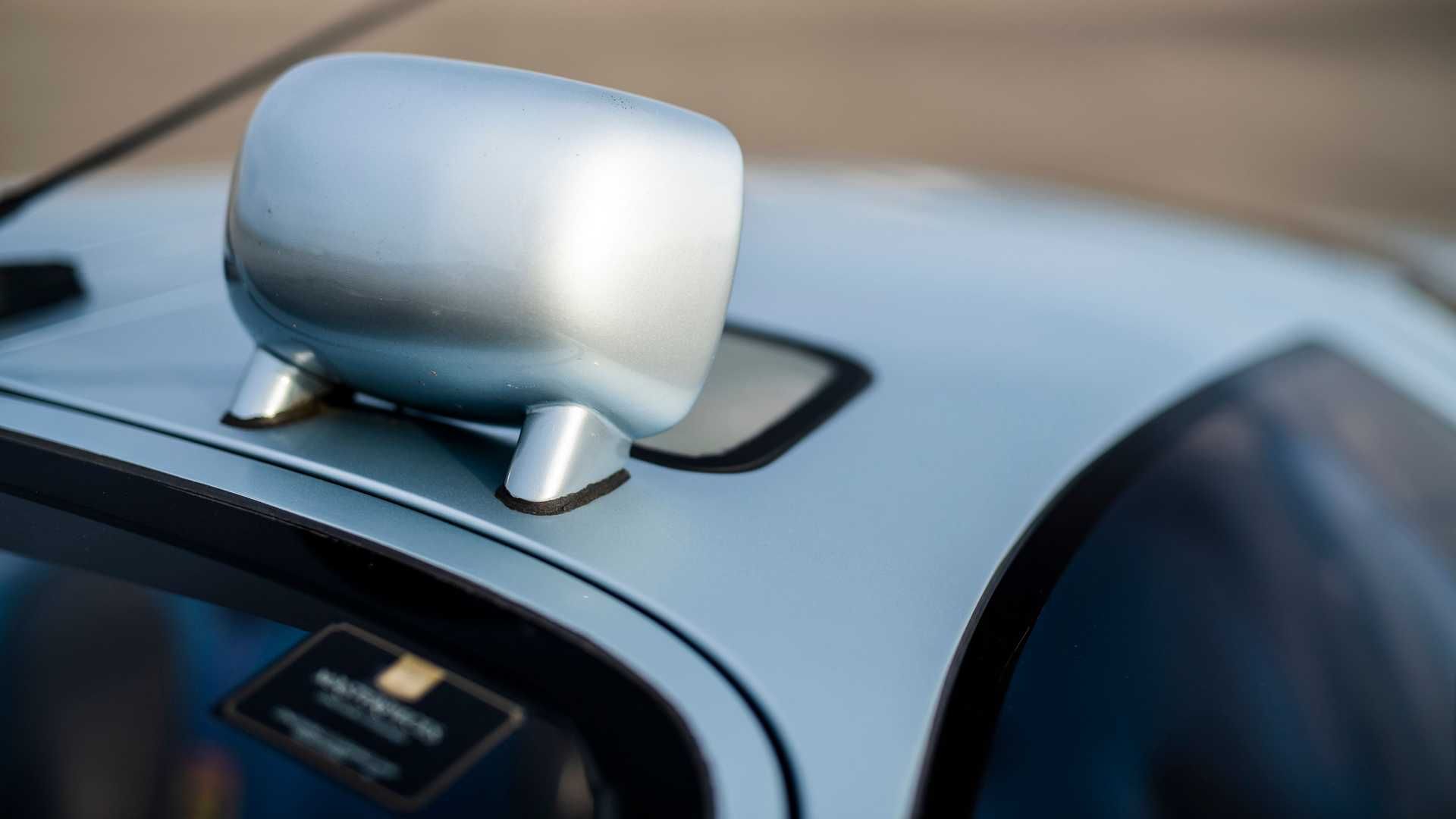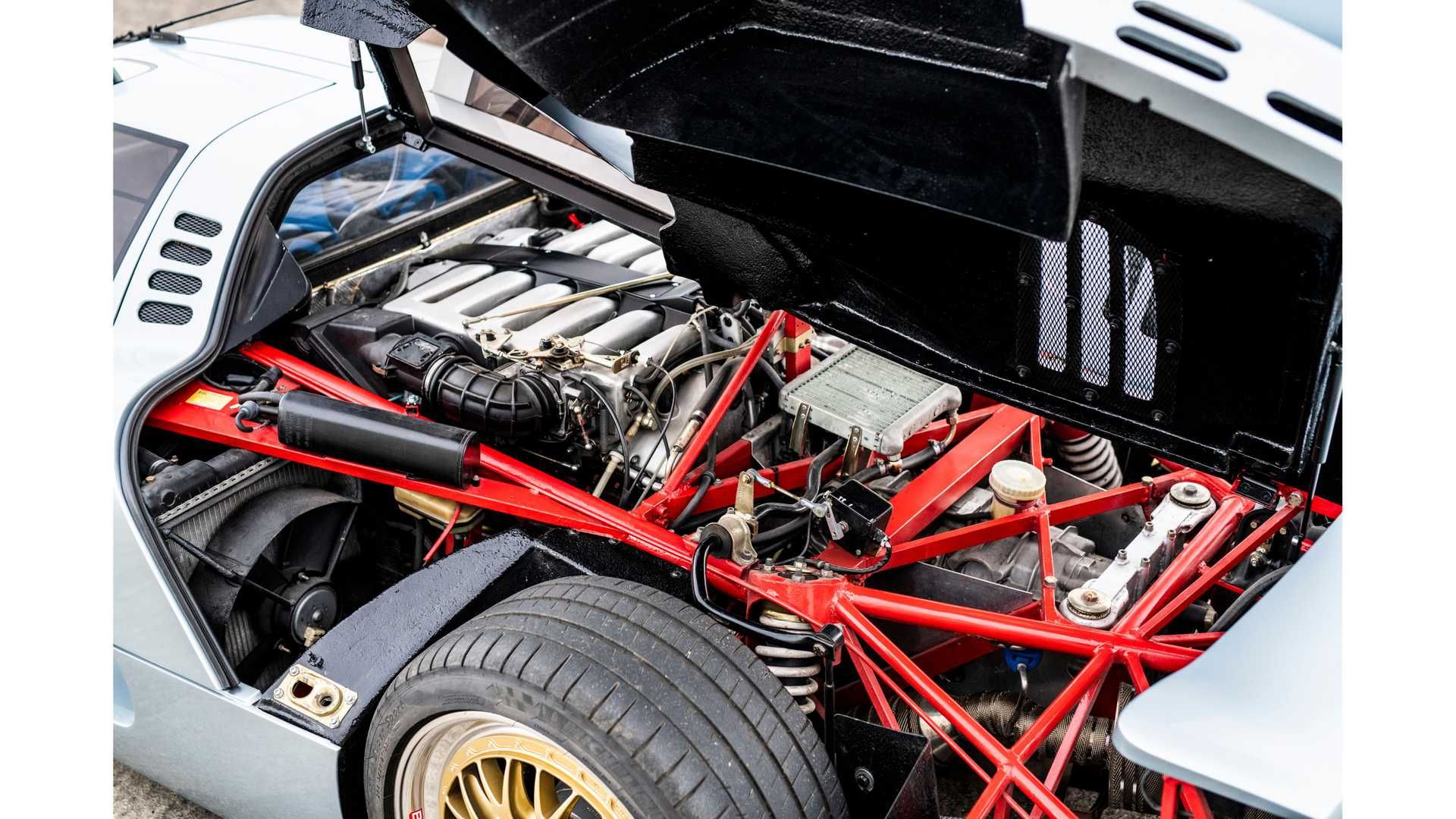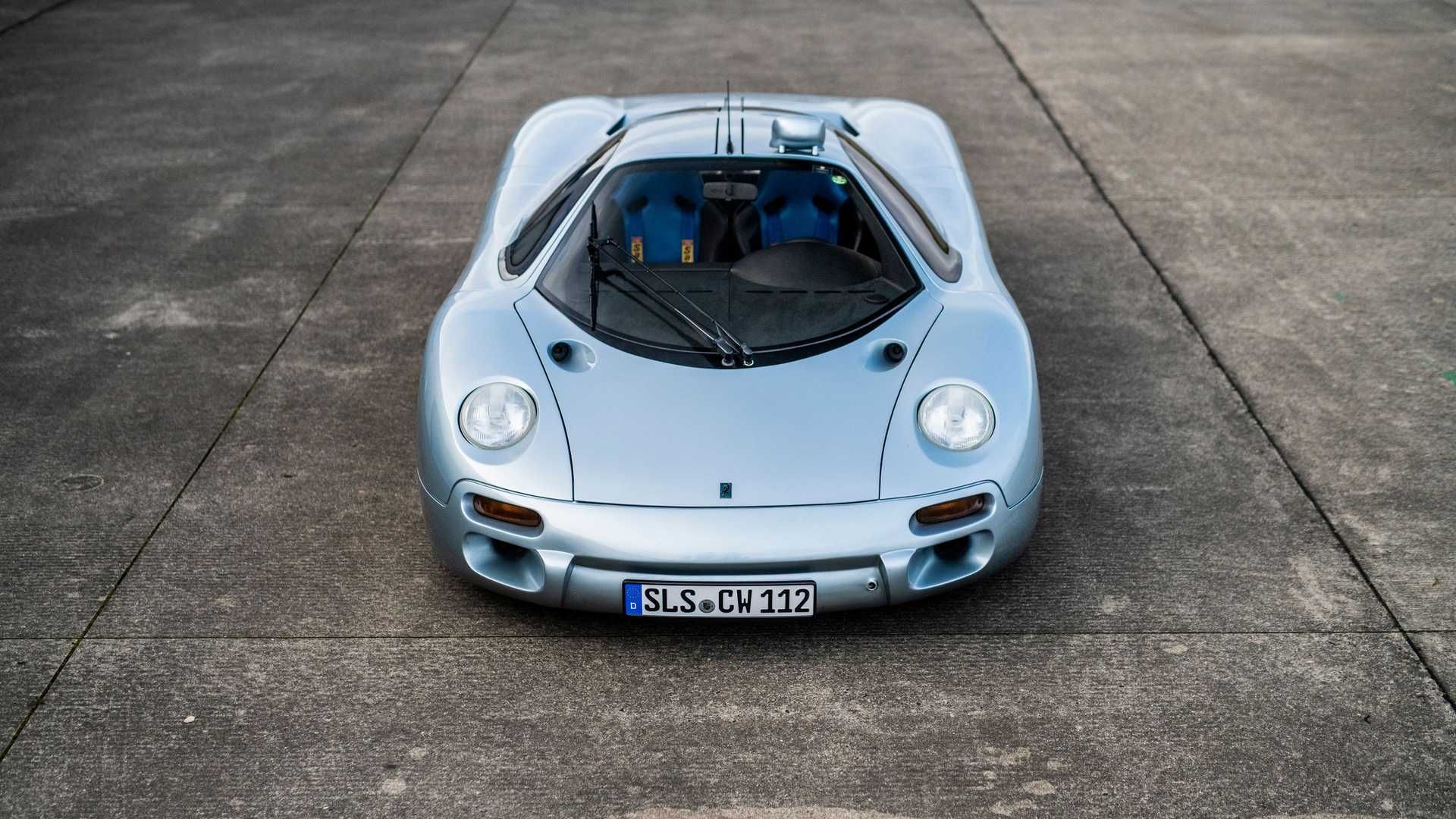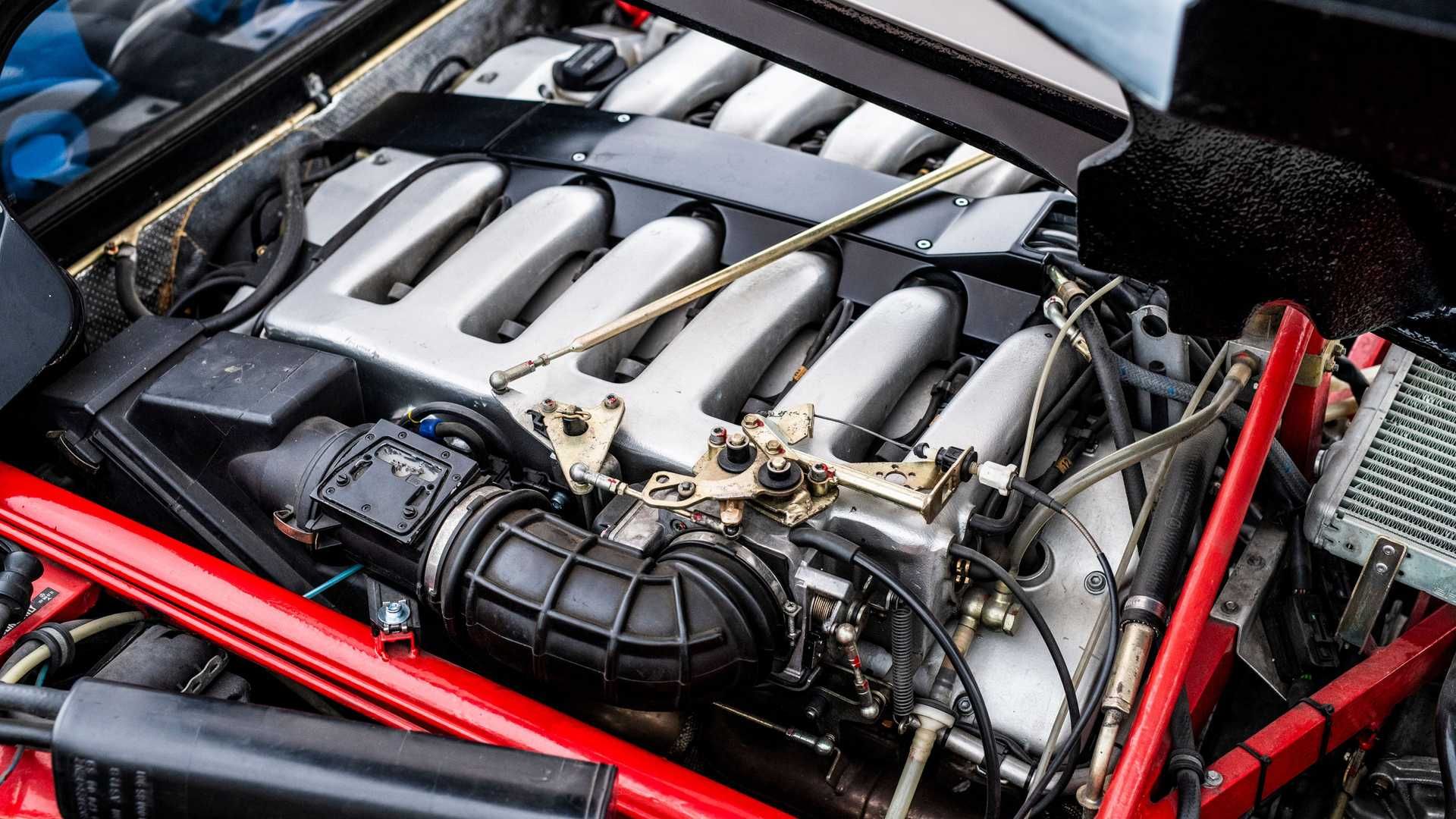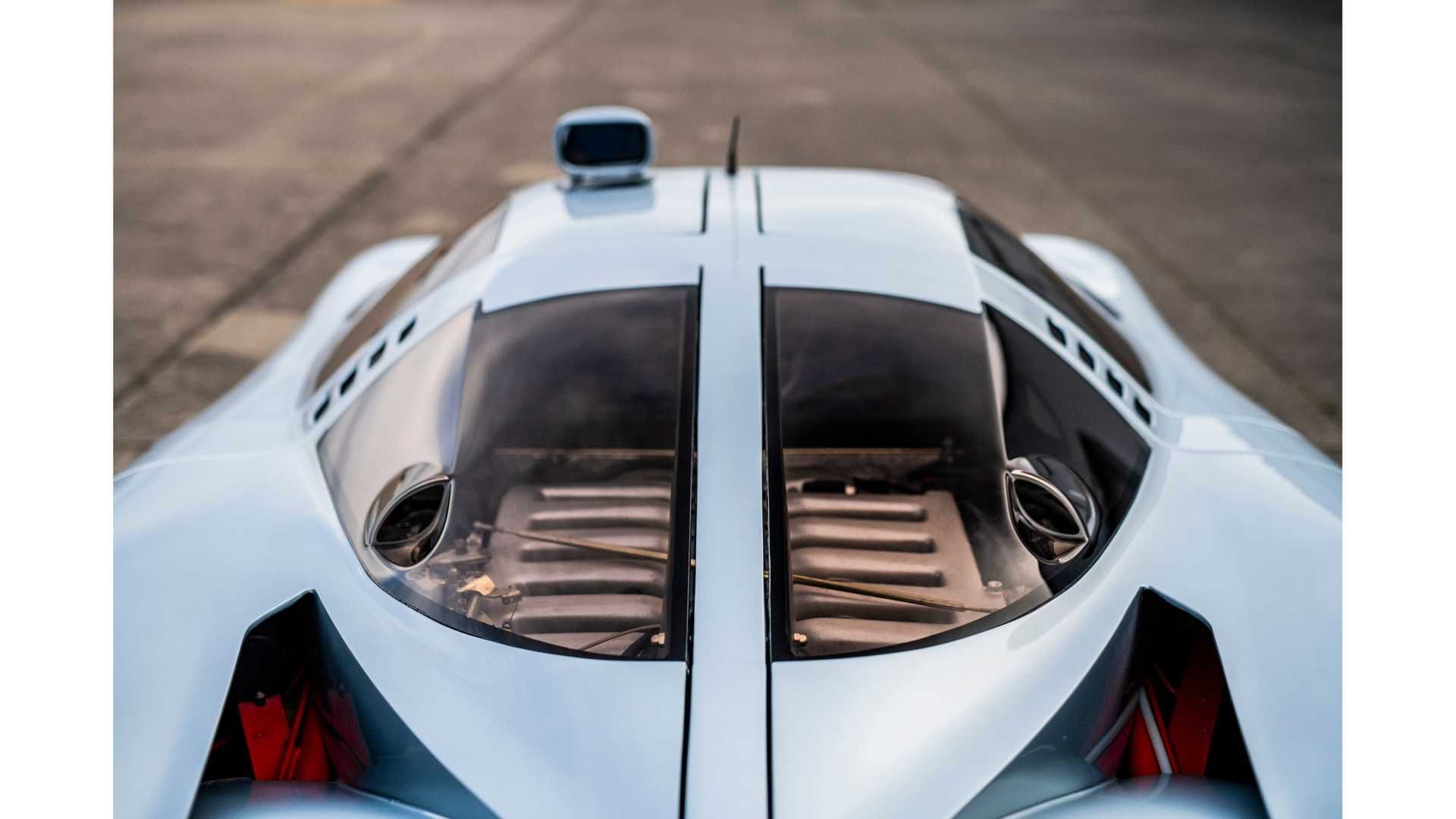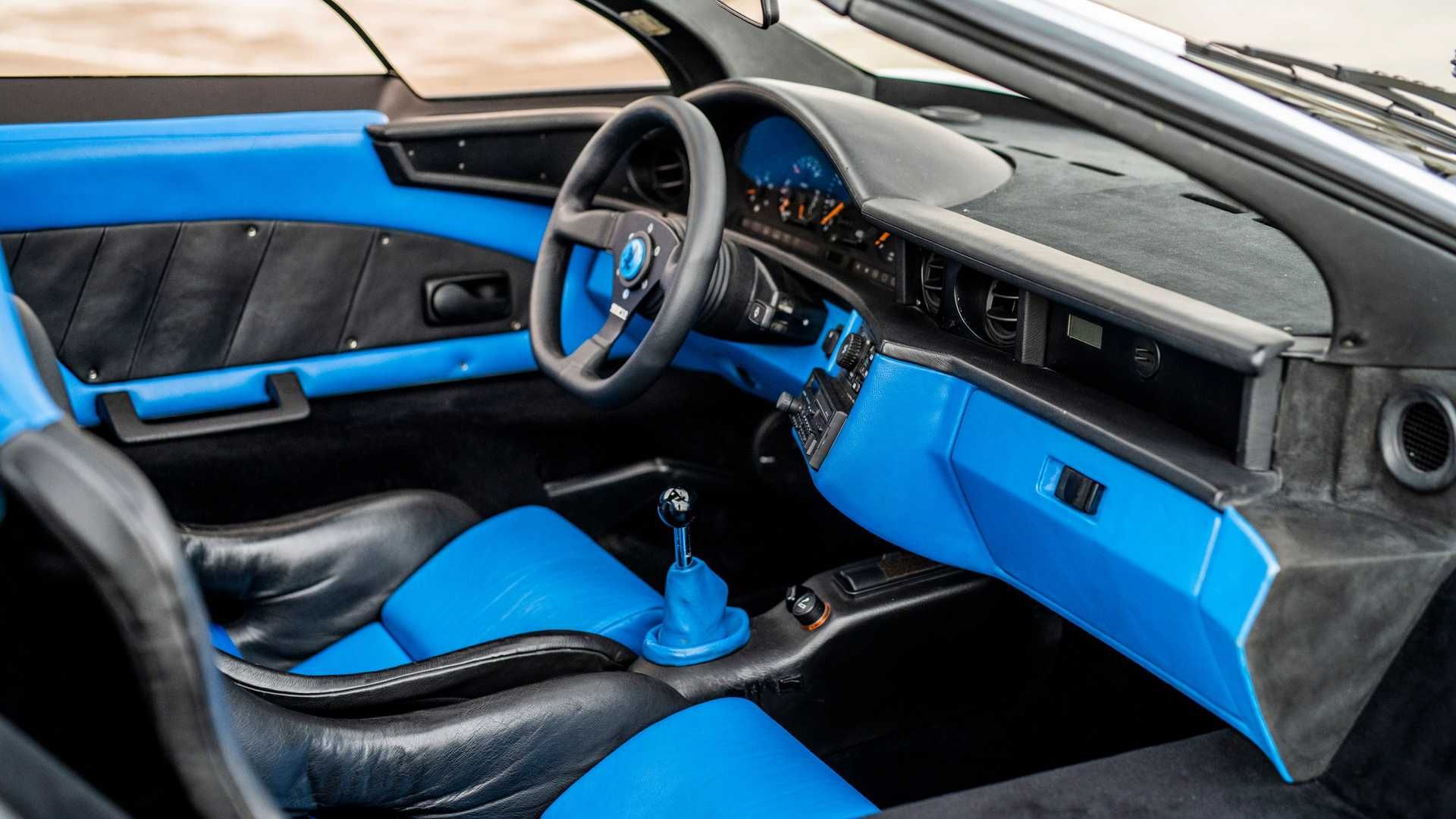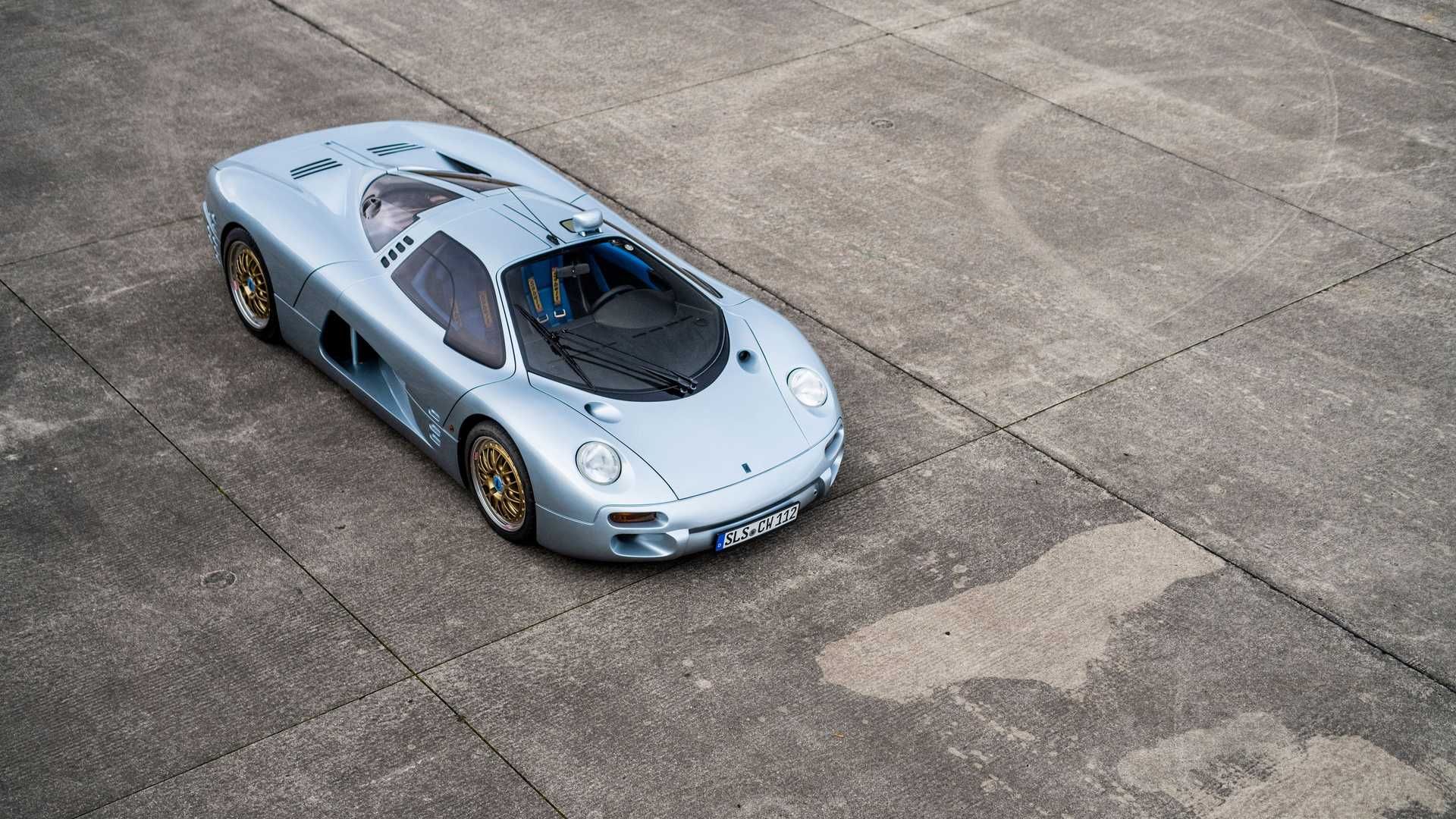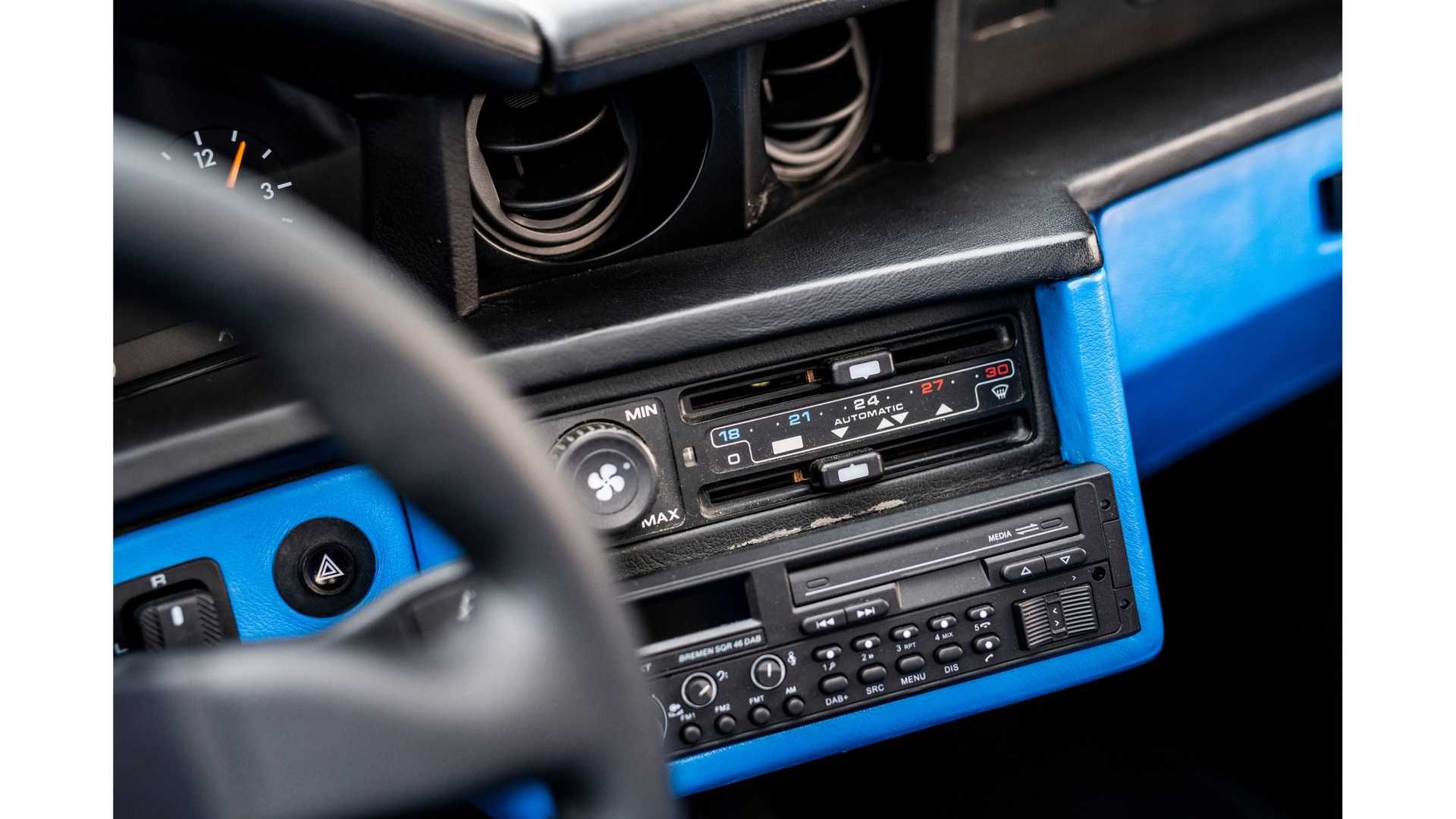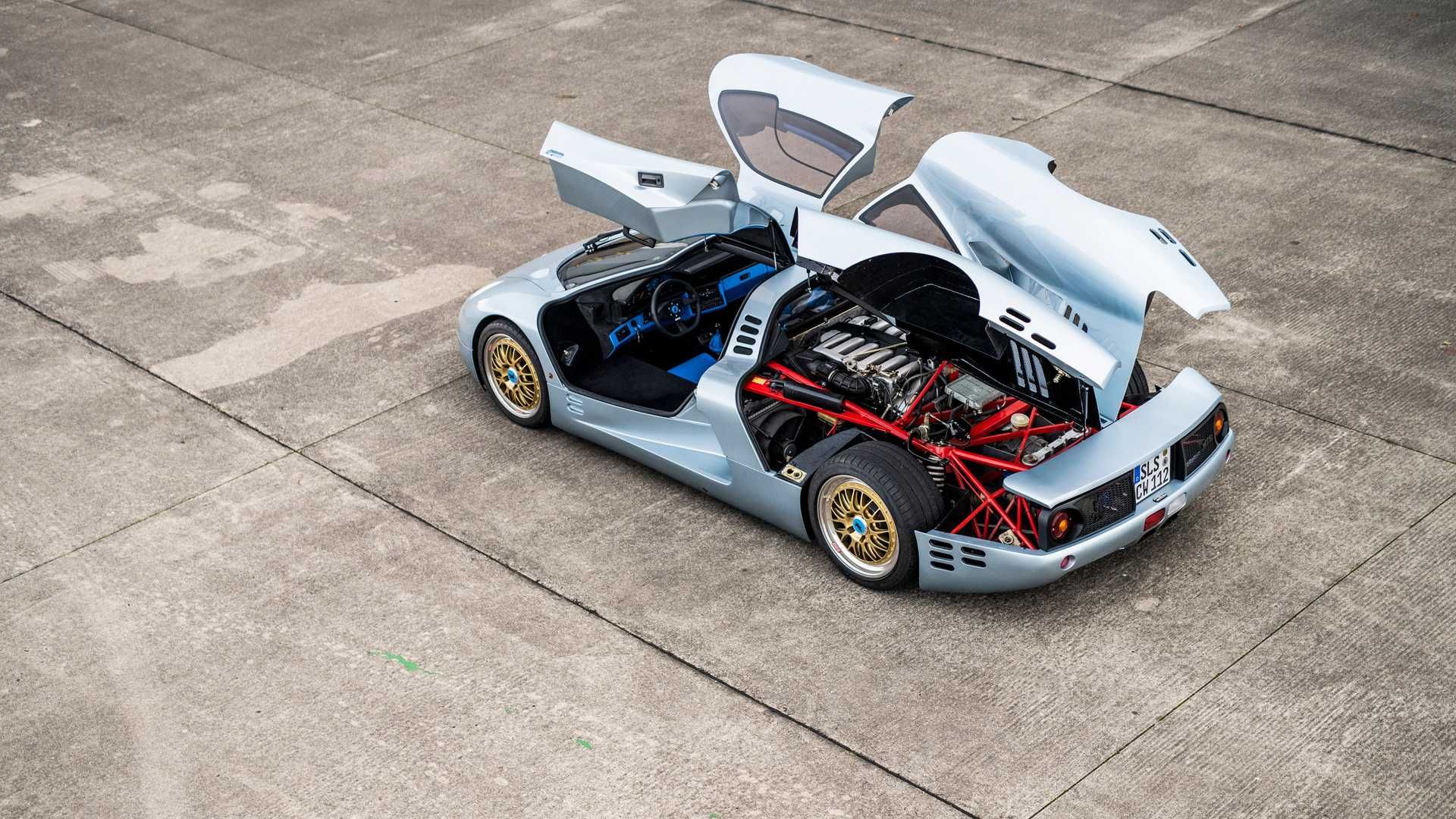Bulbous at the front and obscenely long at the rear - that's how the Isdera Commendatore 112i presents itself to the viewer, a McLaren Speedtail avant la lettre as many have pointed out.
Coming out of early-'90s Germany, the Commendatore shares its engine with the Pagani Zonda and the pop-up headlamps with the more inconspicuous Porsche 968 but, unlike either of them, Isdera never put the 112i into production. This, then, is your chance to own one of the rarest supercars out there.
Isdera - a famous name that sort of isn't
Mercedes-Benz's 6.0-liter, V-12 engine known internally as the M120, breathed some 400 horsepower-worth of life into Horacio Pagani's original Zonda C12 that made its public debut almost 22 years at the 1999 edition of the Geneva Auto Show. Six years prior to the emergence of Pagani, however, German Eberhard Schulz had already been there and done that as far as building a supercar powered by the M120 V-12 is concerned.
But being the first to isolate this formula of a Mercedes engine tied up in an exotic, bespoke chassis didn't help Schulz. With the world's economy traversing a particularly rough patch, wealthy investors ready to help Isdera put the Commendatore 112i into production were nowhere to be found and the example you see here was destined to always feel quite lonely.
That's because, alas, Isdera's accounts were as dry as the Saharian desert by the time the Commendatore, named in honor of Enzo Ferrari himself, showed its less-than-pretty face to the photographers' lenses at the 1993 Frankfurt Auto Show. Things were so bad, in fact, that Schulz's business tanked shortly thereafter and he had no choice but to team up with a Swiss consortium in order to have the money get the car roadworthy.
While the location was the same, the car was not because the Swiss folks that helped Schulz also took over the assets of Isdera, car included, and set about rebadging it as the 'Silver Arrow' - a rather over-used nod to the polished silver Mercedes Grand Prix cars of the '30s. Read on to find out more about this humongous thing that can apparently hit 60 mph from a standstill in under five seconds, which it certainly seemed capable of on the small computer screens in Need for Speed II.
Is there a story behind Isdera?
We wouldn't be bothering ourselves churning out all of these lines if there wasn't one and, as you'd expect when talking about a boutique automaker, the story's quite good. It all starts with the man we've already mentioned before, Eberhard Schulz, who was just 28 years old when he finished building his first car, the GT40-esque Erator.
As an engineering college dropout with bucketloads of talent and ingenuity, Schulz needed little over a year to finish off the assembly of the Erator, a mid-engined sportscar underpinned by a bespoke tubular steel spaceframe covered by an elegant fiberglass body. Behind the driver's head sat a noisy Beetle engine that didn't provide much oomph although just enough was on tap to see the Erator reach 120 mph down the Autobahn.
Quickly after giving himself the obligatory pat on the back, Schulz embarked on a trip to Stuttgart - but not before he got the Erator registered. Stuttgart's a rather small town and you've got no beaches there, nor is it close to any ski resorts and (to our knowledge) the city also doesn't hide any three-star Michelin restaurant. But that didn't bother Schulz as he arrived there for the edifices that Stuttgart is known for: the headquarters of both Porsche and Mercedes-Benz.
Lacking an inked diploma to certify his skills, Schulz decided it would be best if he'd just drop by the HR departments of both companies and plainly ask the kind folks there if there was an opening in any of the juicy departments - anything out of exterior design, R&D, road or race car engineering was of interest for the young self-trained engineer. Something that steers you clear from having to design the ashtray in the center console is, indeed, what Schulz got and that's chiefly because he had the Erator GTE in the parking lot to show to the broad-foreheaded higher-ups.
His argument was simple: he's got the knack for building a car on his own with no outside help meaning that he can pretty much fill any vacancy there is with some semblance of ease. Porsche was ultimately convinced by Schulz's four-wheeled resume and gave him a job in the concept development department.
By then, the Erator had grown a 'GTE' badge and the Beetle engine was long gone, its place taken by a race-prepped version of the 5.0-liter Mercedes-Benz M117 engine. Wider by almost four inches, the Erator GTE was said to be capable of going from naught to 60 mph in just four seconds en route to a top speed of 195 mph. All that in 1971 at which time Porsche was some three years away from introducing the 930 Turbo, the would-be king of the lineup with its 163 mph top speed.
Despite landing a position at Porsche, Schulz kept dreaming to make more cars of his own device. Sometime in 1972, 20 years after the 300 SL had conquered the 24 Hours of Le Mans, Schulz got cracking on what he considered would be a worthy successor to Mercedes' famous sports car. Just like Merc's very own SLX prototype of 1966 (that will dissect in a different story), the second car that Schulz put together was mid-engined and had gullwing doors.
To make it, he got together with Rainer Buchmann who owned and operated the 'bb Auto Exklusiv Service' tuning company that mainly catered to Porsche owners looking for something unique. Rainer and his brother were a few years away from hitting it big with a targa-roofed version of the 930 Turbo and probably felt that putting the name of their company on a supercar would help attract people to their shop. Judging by the fact that the company, now known as B&B Automobiltechnik->http://www.bb-automobiltechnik.de/], is still in business, we think the CW311 did well.
CW311 was the name given to Schulz's second car that was unveiled in 1978 while he was still under Porsche's employ. With a 6.8-liter, race-tuned M100 V-8 in front of the back wheels, the CW311 got its name from its low drag coefficient of just 0.311.
The engine was good for 372 horsepower and, due to its Mercedes origin, Schulze and Buchmann decided to glue a three-pointed star to the radiator grille.
The first Isdera
By then, the CW311 had already been tested by Niki Lauda at the Salzburgring and had also appeared in the Germany comedy 'Car-Napping'. Encouraged by all of the positive reactions gathered by the saber-white coupe, Schulz decided he should cooperate with B&B on an open-top version. The end product saw the light of day in 1982 and was the first to bear the Isdera name (short for 'Ingenieurbüro für Styling, Design und Racing', or 'Engineering-office for styling, design, and racing'). Sporting taillights straight out of Mercedes' parts bin, the Isdera Spyder was powered by a Golf GTi's four-banger although customers could order theirs with a Mercedes mill behind the rear clamshell.
In all, by the time production ceased in 1993, only 16 Spyders found owners which probably didn't do much to fluster Schulz since he was always working on the next big thing.
Longer by 4.7 inches and wider by 2.1 inches, the Imperator 108i was powered by an M117-series Mercedes V-8. Due to the big engine, the car weighed more than the 2,535 pounds of the CW31 but was also more powerful: in full AMG tune, the 5.6-liter powerplant developed 359 horsepower and 387 pound-feet of torque. A 6.0-liter version of that same engine (allowing for a top speed in excess of 180 mph) was also available.
|
Engine |
5.6-liter M117-series Mercedes V-8 |
|---|---|
|
Horsepower |
359 HP |
|
Torque |
387 LB-FT |
|
Weight |
2,535 pounds |
With a full 12 months needed for Isdera to complete one (1) Imperator, it's no wonder that barely over a dozen had been sold by the time that the company introduced the improved 'Evo 2' version in 1992. Clever active suspension bigger, 17-inch wheels housing bigger brakes, and a bigger fuel tank were all part of the update but one thing that was kept as a throwback to the CW311 was the roof-mounted rear-view mirror, something that the Porsche 917 also featured when racing on the banks of Daytona. While it might've made sense there, it didn't really add up on the roof of the Imperator but Schulz kept the feature when he created his next car, the Commendatore 112i - the first inklings of which go all the way back to 1987.
One last, big hurrah
Do you remember the De Tomaso Mangusta? Much more exclusive than the Ford-bankrolled Pantera, the Mangusta was Alejandro De Tomaso's first sports car for the big leagues and it featured, awkwardly, a two-piece rear clamshell that opened upwards in full gullwing fashion. Schulz took that feature and doubled down as the doors of the Commendatore also opened up just like on the 300 SL.
But the doors weren't the Commendatore's only party piece. Ushered into the arms race of the late '80s and early '90s by the appearance of such cars as the Ferrari F40, the Lamborghini Diablo, and the Bugatti EB110, Schulz decided to up the ante and nestle the engine out of a Mercedes-Benz S600 in amongst the cobweb of bars that made up the Commendatore's spaceframe chassis. That behemoth, the M120 6.0-liter V-12, came with dual overhead camshafts on each bank and was capable of over 400 horsepower.
ZF had previously supplied transmissions to Isdera but, for the Commendatore, the company turned to another, much more famous tuning company from Germany: RUF. The Porsche specialists altered a five-speed Getrag gearbox and added a sixth forward gear that allowed for a theoretical top speed of 211 mph, close to RUF's own CTR that could do 213 mph.
A new flywheel was made to send the power to the M120 V-12, an engine that Mercedes-Benz would always mate with lanky automatics. All the added ancillaries added weight prompting Isdera to make the body out of GRP. The chassis was a traditional spaceframe with suspension very similar to a Porsche 928's although it was active, the car lowering at high speed. For the headlights, Isdera turned to another one of Zuffenhausen's front-engined products, the 968.
All of the features on the Commendatore that had trickled down from racing cars failed to conceal Schulz's intention to actually enter a bare-bones version of the car in the 24 Hours of Le Mans. After being close to building a track-only version of the Imperator a few years prior, Schulz saw the light at the end of the tunnel in '93 when the ACO once again invited Grand Tourers to race around Circuit de la Sarthe. Coincidentally, that's also when an unfinished Commendatore was unveiled.
Sadly, Isdera literally put everything on the line to make the Commendatore what it was - namely a 229 mph speed king if equipped with the optional 611 horsepower engine equipped with the optional 611 horsepower engine}}. So much, that the company went bankrupt and, were it not for a Swiss consortium stepping in, the $5 million investment would've gone to waste. But it didn't and the car was saved. Its new Swiss owners ditched the roof mirror, threw a bunch of three-pointed stars on the body, and also dumped the gorgeous 18-inch BBS multi-piece alloys in favor of severely dull five-spoke wheels and presented the car, as the 'Silver Arrow C112i' at the 1999 edition of the IAA Frankfurt.
Shortly after the show, the car, which was meant to advertise for the equivalent of $500,000 (cheaper than the $672,000 MSRP of the Bugatti EB110), was sold off to Swiss billionaire Albert Klöti who kept it up until 2005 when it changed hands for the second time. As it happened, by the time the C112i had passed on to its second caretaker, Schulz's company had re-emerged and was busy creating the obnoxious Autobahnkurier 116i out of its new premises in Hildesheim.
While nobody was pleased with the retro, steampunk-ish Autobahnkurier, Isdera's re-launch was ultimately good news for the Commendatore. Almost 20 years after featuring in the second installment of the Need for Speed franchise, the car received a complete makeover which was done by Isdera after acquiring the car. The gorgeous BBS rims went back in their place as did the weird mirror on top of the bubbly roof. The Porsche Arctic Silver paintwork has also been restored as well as the Recaro blue and black trim inside the surprisingly roomy cockpit (or not so surprising since the car measures 15.1 feet in length).
For some reason, Isdera is now looking to sell its most insane creation and with only 6,524 miles on the clock, the Commendatore is in need of someone who'll just get in and drive it. Again and again. Having said that, the next person who owns it may be hesitant to do so as we expect it will go for quite a hefty sum when it crosses the block at the RM/Sotheby's Paris sale on February 13th.
But that would be sad - after all, there are dozens of Paganis out there with the M120 engine at their core and only one Isdera.

